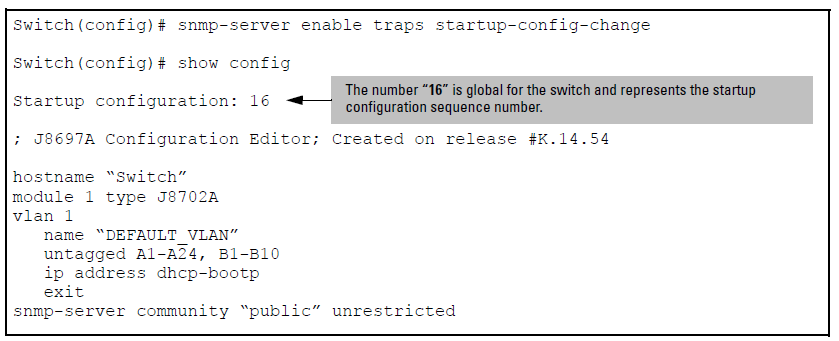

- LOGSTASH CONFIG SNMP TRAP RECEIVER HOW TO
- LOGSTASH CONFIG SNMP TRAP RECEIVER SERIES
- LOGSTASH CONFIG SNMP TRAP RECEIVER DOWNLOAD
- LOGSTASH CONFIG SNMP TRAP RECEIVER FREE
Otherwise you will only get OID's instead of meaningful trap names like " Info", " Minor", " Major". Likewise, if you want your Trap receiver to decode the trap you will have to import the MIB. Also notice how in the first example we are using " -m ALL" to load the MIBs from the default directory, which is " /usr/share/snmp/mibs/ ". Make sure you place the PowerStore MIB in that directory. Snmptrap -v 2c -m ALL -c public localhost '' PowerStore-MIB::powerstoreGenericTrapMajor powerstoreTrapDescription s 'Capacity Full'Īnd it produces the same result than this For example, we can send the trap like this By using MIBs we can send traps with friendlier names.
LOGSTASH CONFIG SNMP TRAP RECEIVER DOWNLOAD
You can download the MIB for PowerStore from the Dell Support site. MIB (Management Information Base) are collections of definitions which define the properties of the managed object within the device to be managed. A better way to work with SNMP is through MIBs. Working with this long OID's a bit awkward and prone to error. Branch 1139 in the example correspondes to "EMC", which is where the PowerStore branch lives That level is where specific enterprises' subbranches live. So the OID in this paragraph is pointing at a location in the SNMP tree that is 7 levels deep. Each branch has a number and so does every subbranch under it. Essentially the SNMP structures all the information in a big tree.
LOGSTASH CONFIG SNMP TRAP RECEIVER SERIES
In the previous command you might have noticed two long series of numbers separated by dots, ex: 1.3.6.1. In SNMP speak, this is referred to as OID, or object identifier. Firstly, let's ensure Logstash is installed. This is almost identical to our Syslog solution. The first part of this solution is to collect the data from PowerStore's REST API. The Logstash method we are going to use is very flexible and we could easily collect information from the Events API and map them to SNMP Traps on the Alerts MIB if we wanted to do so The Event Collection Events are "individual" events (pardon the pun) that get reported whereas Alerts aggregate multiple related events and introduce the idea of "Acknowledged" and "Cleared" to provide a more operational point of view.

What's the difference? As you can see in the PowerStore REST API reference guide Event and Alert they have very similar fields. Furthermore the PowerStore MIB is based on the Alert resource. Whereas the audit log is the typical source for Syslog logging, the Alert and Event API resources are the natural candidates for SNMP.
LOGSTASH CONFIG SNMP TRAP RECEIVER FREE
So if you are already familiar with things like SNMP, feel free to skim ahead What to include in the alerts? I have tried to write this article in as much details as possible. I won't cover those aspects in this article I encourage you to revisit quickly the article as we did an extensive introduction to Logstash, with practical examples as well as a description of the logs available in PowerStore. For simplicity we will use the same toolset that we used in the previous article.
LOGSTASH CONFIG SNMP TRAP RECEIVER HOW TO
However there is still some requirement out there for SNMP traps, so we will explore how to do it. it would be fun to see Prometheus monitoring Kubernetes via SNMP :) As in the Syslog case, ultimately most modern monitoring tools today support collecting information via REST API because that's the way the application world is going, i.e. Sometimes I come across organizations that still have a requirement to send storage array Alerts to SNMP.


 0 kommentar(er)
0 kommentar(er)
